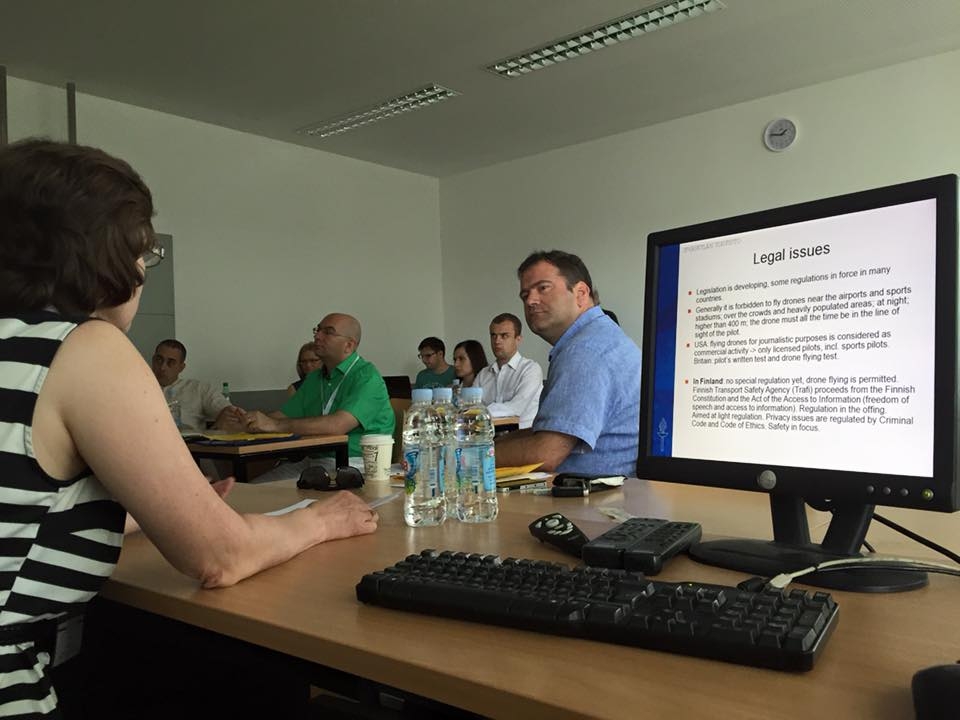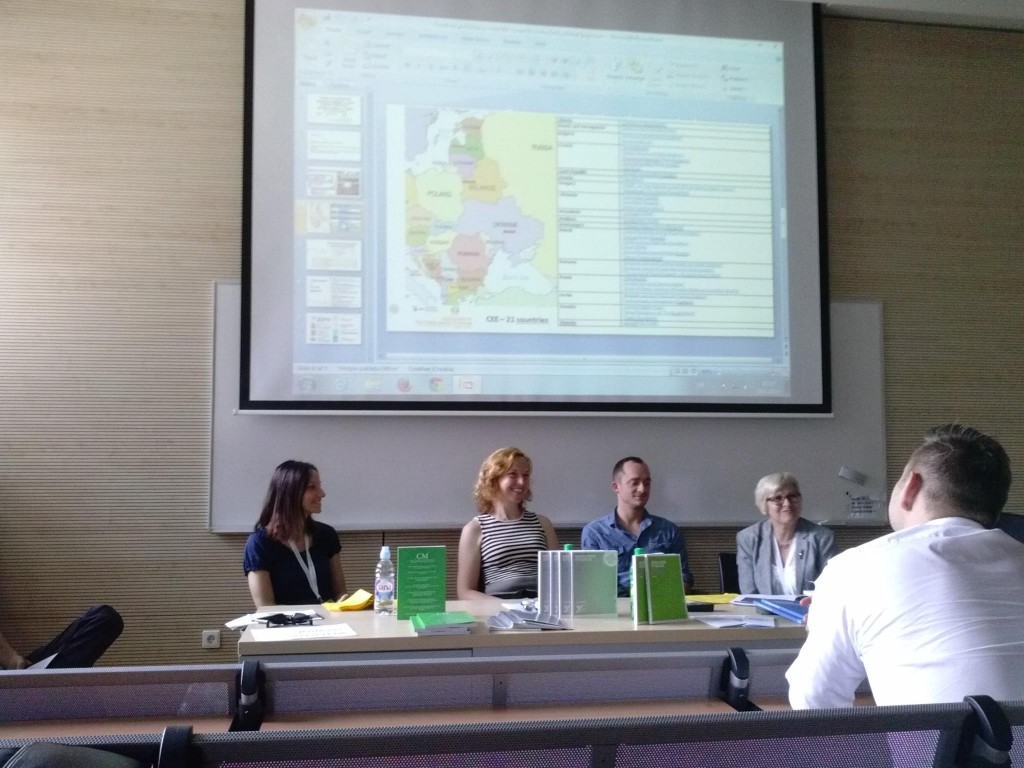The Central and East-European Communication and Media Conference 2015 (CEECOM2015) ends today, Sunday 14th June in Zagreb, Croatia. The conference was organized by University of Zagreb in cooperation with ECREA CEE Network and co-sponsored by ICA.
The conference focused on the digital transition that challenge media industries, audiences, and regulators. It’s main aim was to discuss these global developments and their challenges to the region of Central and Eastern Europe. The three-day event included 33 sessions and 4 plenary sessions.
Here are our re-cap and biggest takeaways from the conference, reported partly by conference attendees Turo Uskali and Epp Lauk of University of Jyväskylä.
 Epp Lauk presenting a paper about drone journalism in CEECOM 2015, Saturday. Photo by Turo Uskali.
Epp Lauk presenting a paper about drone journalism in CEECOM 2015, Saturday. Photo by Turo Uskali.
Friday – What is journalism?
The first plenary session of CEECOM was titled The Digital Public Sphere, chaired by Auksė Balčytienė of Vytautas Magnus University.
Paolo Mancini of University of Perugia spoke about fragmentation, digitalisation and consequences of these on democracy. The crisis of western journalism is because of technological innovations, Mancini notes. Essentially the crisis has to do with what journalism is and how to define it. Right now there is confusion about who can be defined as “journalists”, and what can be called “the news”.
We live in the world of abundance, Mancini continued, and especially we live in the world of media abundance. There is a lot of media, a lot of news, and a lot of circulated news. We have gone from mass audience to fragmentation. Furthermore, the idea of public square is slowly disappearing and media market is getting increasingly crowded, meanwhile traditional media is decreasing and niche audiences are replacing mass media consumption. This, Mancini remarks, began in the U.S., as can be seen for example in the case of Fox News.
This has five major consequences.
- Increasing polarization
- Changes in political participation. That is, the web is replacing the traditional mass parties. This has both good and bad consequences, equally important – see for example: Tunis, Arab Spring, Swedish pirate parties
- Diffused but weaker watch dog function on governments
- More complex and fragmented negotiation process, and finally
- Risk of manipulation: Blurred, false news.
Saturday: Media freedom in Europe? Not that rosy!
The third plenary session in CEECOM was titled Media Freedom in Europe Dunja Mijatović of Organization for Security and Cooperation in Europe opened the session speaking about current situation of media freedom in Europe.
She raised up concerns about the of situation of Ukraine as an example of conflict situation. Propaganda isn’t dead, she reminded, and media and journalists are regulary used as tools for certain purpose. It is very difficult to be a journalist in Ukraine right now in other ways too – there are problems with safety, with harassment and with real and threatened violence.
Mijatović also mentioned France and attack on satirical magazine Charlie Hebdo as an horrific example of how terrible times are right now for confrontative journalism.
Even in the countries where we think media freedom blossoms, there are various issues. One of these newer problems is abuse of especially female journalists online.
“You have rape threaths, death threaths, [and] use of absolutely unacceptable speech in order to stop these journalist reporting criminal corruption”, Mijatović reminded the audience. “Many journalists stop writing because of these threaths.”
We need to name and shame all the countries that break rules, Mijatović concluded.
Sunday: So many journals in CEE!
 Photo by Epp Lauk
Photo by Epp Lauk
The third day of CEECOM conference saw an interesting session on Publishing Scientific Research in the Field of Media and Communication in CEE, chaired by Boguslawa Dobek-Ostrowska of University of Wroclaw. This panel featured several journals from CEE area, and featured discussion e.g. on the past and present of communication research in the area.
It seems like number of journals is ever increasing. In 21 CEE countries, today already more than ten international journals on communication and media research are published.
See all of the plenary speeches here (Friday), here (Saturday) and here on Youtube.
Next year’s CEECOM conference will be held in Tartu, Estonia.